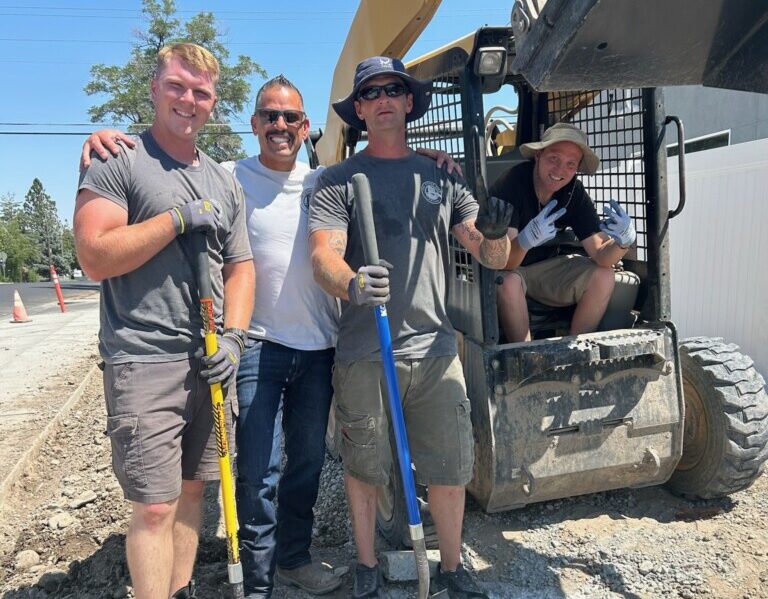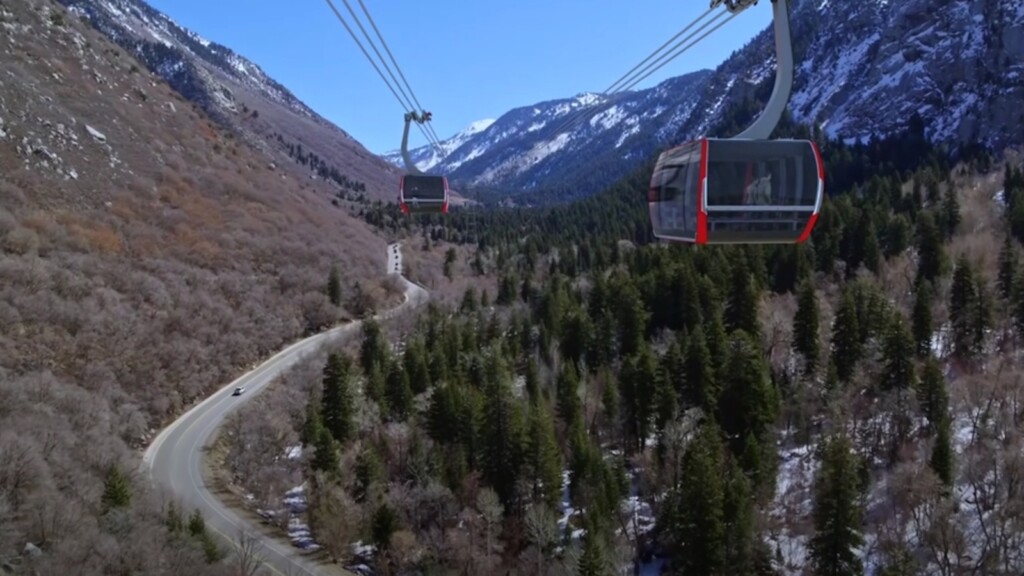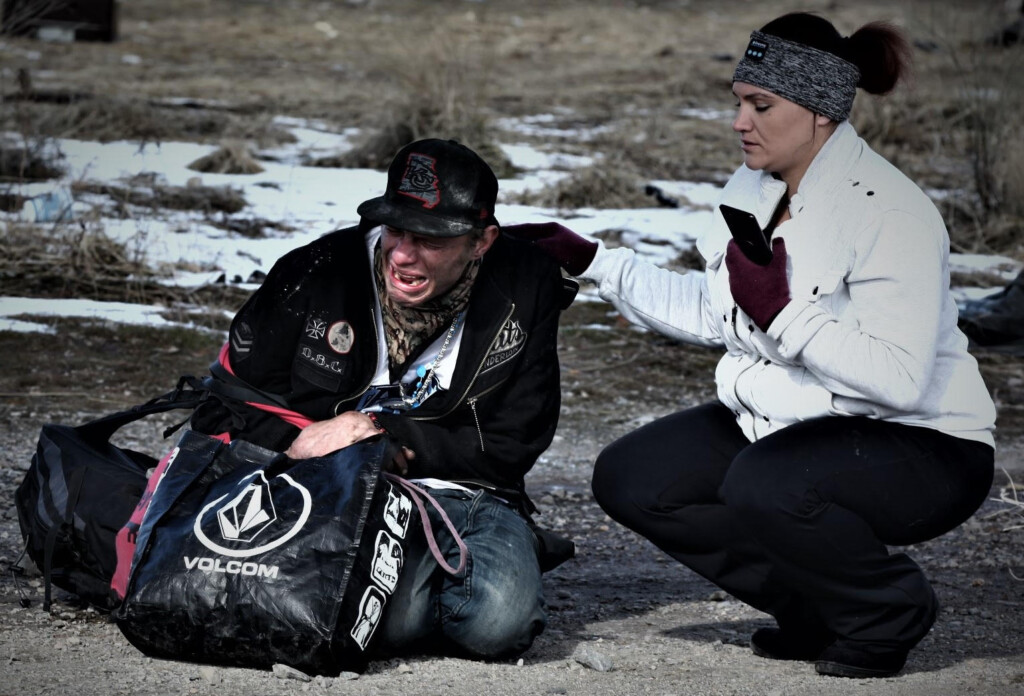It’s a disturbing fact that the United States puts more of our citizens behind than any other country in the world by far. Equally unsettling is that half of all prisoners return to prison after their first sentence. As taxpayers we spend $182 billion each year locking up over 1.9 million people in penitentiaries.
Clearly, this system is broken and the only solution political leaders seem to find is to build more prisons. Prisons are good in that they put dangerous criminals behind bars, but they aren’t good at reforming these criminals or changing their behaviors.
There is an organization, however, that isn’t costing taxpayers any money and it’s reforming hardened criminals by offering a community that instills the values of accountability, respect and dignity through hard work.
Some of those in the program like to call it “behavior boot camp.” The organization is called The Other Side Academy and it’s changing the way that Utah and our political leaders are examining reform because they transform lives through social-enterprise work programs. Their success stories are numerous and for the next six months Utah Stories will be sharing these stories with our readers.

When Jordan Holdaway was facing a fifth prison sentence looking at close to a decade prison sentence, his criminal career seemed to be heading on a one-way path to nowhere. Holdaway had learned to live the lifestyle of a criminal because a “criminal” is what he had become after twenty years of a drug addict committing crime. But then Holdaway says his prosecutor presented him an opportunity to get out of his sentence.
The judge would likely allow him to enroll in The Other Side Academy, two-year program and get out of his sentence. “It was new at that time, all I knew about it was that it was run by a few ex-convicts from California and it was a boot camp for career criminals… It was an opportunity to get myself out of the jam I had gotten myself into.” he explained. Holdaway added, “I was sick of the life I was living, but I didn’t know how to get out of it.”
Initially at TOSA, Holdaway said he found ways to get away with breaking rules, such as contacting his girlfriend when this was not allowed in the first year. He says he could go through the motions to not get into any trouble. Holdaway admits he was putting on a front to the leadership while maintaining his “duplicitous behavior”.
Like a typical stoic tough guy, he said that he didn’t want to “clean up” his behaviors, but it turned out he wasn’t actually fooling anybody. After 18 months in the program, TOSA Director Dave Durocher brought him into his office and expressed his disappointment, “You can either leave [TOSA] now, or you can start over and do this the way you were supposed to do it the whole way.”
Holdaway added, “18 months into it, I played the tape forward. I looked at where my life was, and honestly, I was probably going to get right back into the same trouble that I had gotten myself into again. [Dave] suggested I start over and do the program the right way.”
Holdaway could have gone free. He could have gotten off and gone back to his old group of criminal friends. But instead, he committed to another two years at TOSA. He realized he had to do this to make the real changes in his life and in his mindset that he knew were necessary to make it in society.
After four years at TOSA, Holdaway said that he began to notice real changes in the way he was thinking, behaving and seeing the world.
At that point, Holdaway said his goals for his life began to change. “I wanted to find ways to give back to the organization that has given me so much and given me my life back.”
He decided he wanted to not only stay on at TOSA, but work with his good friend Dylan Gibson by starting a new construction company as one of the social enterprises at TOSA.
The rest of this story was recounted by Dylon Gibson, and it’s incredible that two career criminals could initiate and make such an astounding success out of their social enterprise.
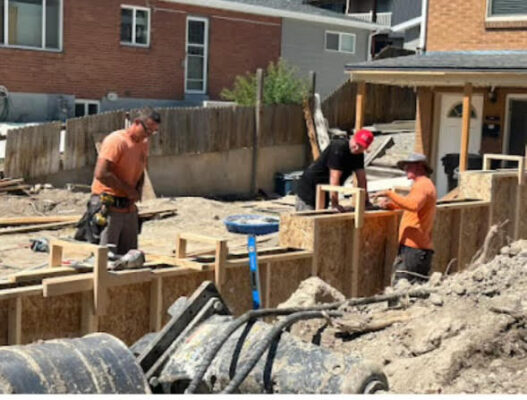
Other Side Construction receives a five-star rating on Google. While their specialty initially has been remodels and restorations of old homes — they remodeled the mansion that everyone at TOSA inhabits — they will take on nearly any project, residential or commercial.
Their most recent success is the completion of the building and interior of the Other Side Donut Shop. The entire project required clearing land, pouring foundations, framing, drywall and finish work. They sub out some of the electrical and plumbing, but to witness their crew in action is inspiring. Cell phones, cigarettes and vape devices are not allowed. All men are actively engaged and appear happy to be on the crew. Talking to the men, they all feel very fortunate to have such a great job working with guys who they feel camaraderie with — all of whom have a great deal of respect for each other.
Holdaway is now engaged to be married to another TOSA graduate, Tiffany, who is one of the operators of the Other Side Village. Utah Stories interview with Tiffany will be released next week.
Background on TOSA — Taking old mansions in run-down areas and transforming both properties and lives
TOSA was started in 2014 by Joseph Grenny. David Durochur was recruited from Delancey Street Recovery Center in San Francisco to operate the facility. Moe Egan, also from San Francisco, was brought on as a leader to be mentors to their first residents. Both Durocher and Egan were former convicts and felons who had been working at Delancey Street for a number of years.
The Delancey Street Recovery model is to allow convicts, felons and former drug addicts to develop job skills, vocational training and interpersonal relationship skills similar to a college curriculum. Delancey Street has been an incredible success since the late 1970s. Their story has been featured on Jane Pauly, The New York Times, the LA Times, and the Wall Street Journal.
Founder Mimi Silbert describes it this way: “We take the bottom two percent and give them an opportunity to become skilled and successful and involved in building their confidence through job skills and training.”
Ninety percent of those who enter the program remain out of prison, and many continue on after the mandatory two-year term in their various social enterprises. Delancy Street’s most well-known social enterprise is their white table cloth and cafe, where they serve gourmet food to hundreds of customers daily from their restaurant located in Embarcadero. The entire operation and five-star rated restaurant is operated by ex-convicts.
Grenny adopted Silbert’s model, even choosing a former mansion that had seen better days, located just below 700 East and 200 South, to be the center of the campus. Students in the academy restored the mansion to its original splendor and it became their primary residence, back when TOSA had less than a dozen residents.
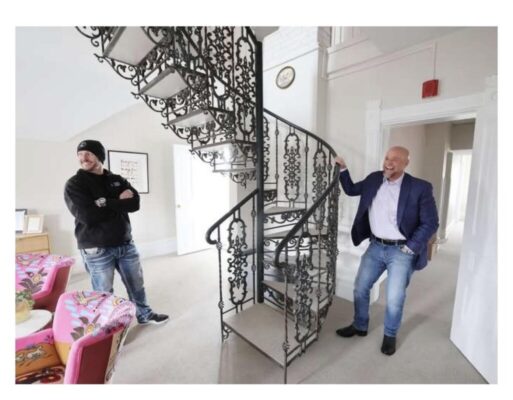
Jordan Holdaway took Utah Stories on a tour of the mansion, pointing out the work they performed and the attention to detail, including ornate carved hand-rails and wood sculptures. The mansion features a library and a sitting room. The stark contrast between this environment and a prison couldn’t be more dramatic. All of the rooms feature polished wood, sparkling-clean floors, as well as inviting, comfortable and friendly residents who now lead orderly lives.
When I returned to get some drone footage of the mansion, I was immediately noticed. “What are you doing here?” was the inquiry. When I told the gentlemen why I was flying a drone around their home, I was given a friendly greeting and asked, “Are you hungry? Do you want to come in and have a burger?”
I can’t help but think that these friendly and polite people who make this neighborhood such a nice place would all otherwise be in prison, and I found some statistics regarding this on TOSA’s website. Delancey Street helped the state of California avoid the expense of more than 100,000 years of incarceration.
“It was astounding,” Joseph recalls. “I’ve driven by it in San Francisco dozens of times and thought it was a bunch of Mediterranean villas owned by tech millionaires. It is a gorgeous 300,000 square foot complex on some of the priciest real estate in San Francisco. It was built entirely by convicts.”
Now TOSA is reshaping Salt Lake City’s ideas and methods regarding rehabilitation of convicts in a major way. The Other Side Village is slated to open in early 2025 — a tiny home village that will eventually be a 430-home community. U
————————–
Author’s additional notes
While my point in writing this isn’t to disparage the existing models for recovering drug addicts and convicts, I have to point out the stark contrast. Just four blocks to the west and on 200 South the neighborhood around the Magnolia Apartments, (the tax-payer supported) permanent supportive housing has deteriorated to the point where residents are moving out and real estate values have plummeted. Former resident David Ibarra said that nobody wanted to buy his condominium across the street from the Magnolia because the drug use and drug trafficking activity around the facility has run rampant.
Utah Stories has been contacted by three residents from the Magnolia who say that the number of residents dying from drug overdoses is such a frequent occurrence that they have come to expect it. And these deaths and the abject failure of the facility to enforce any type of drug prohibition has not worked. Why is this? Road Home Director Michelle Flynn will not return any of Utah Stories inquiries or phone calls.



